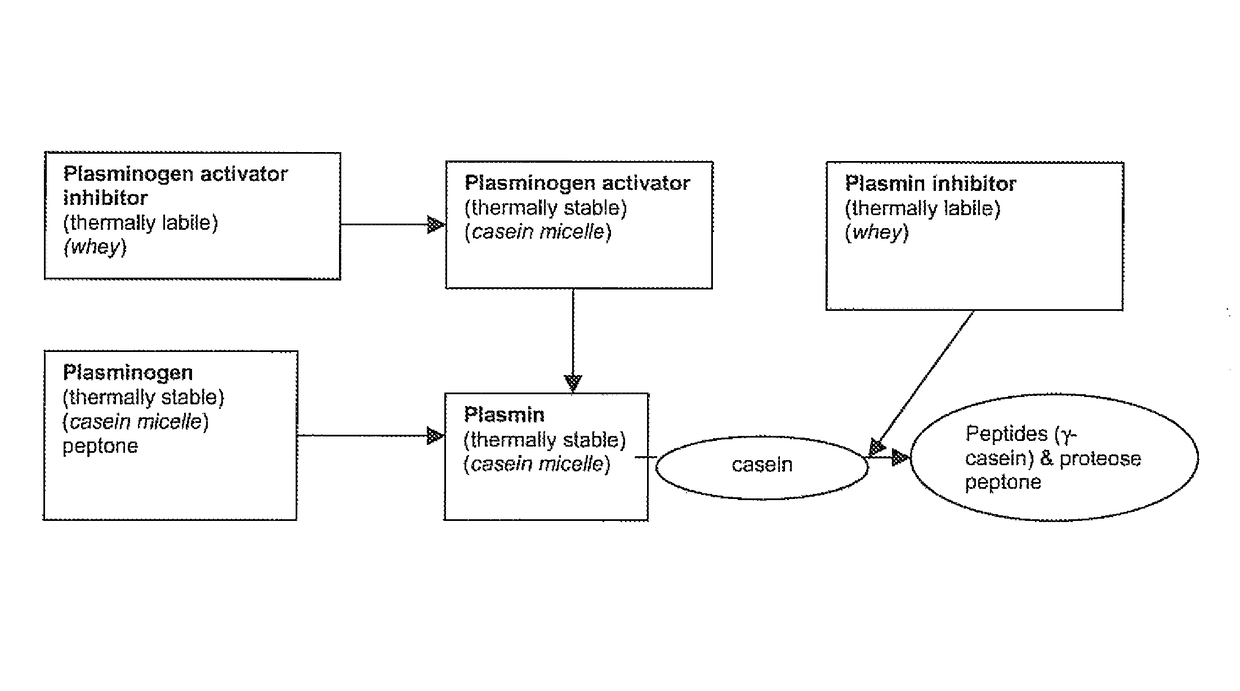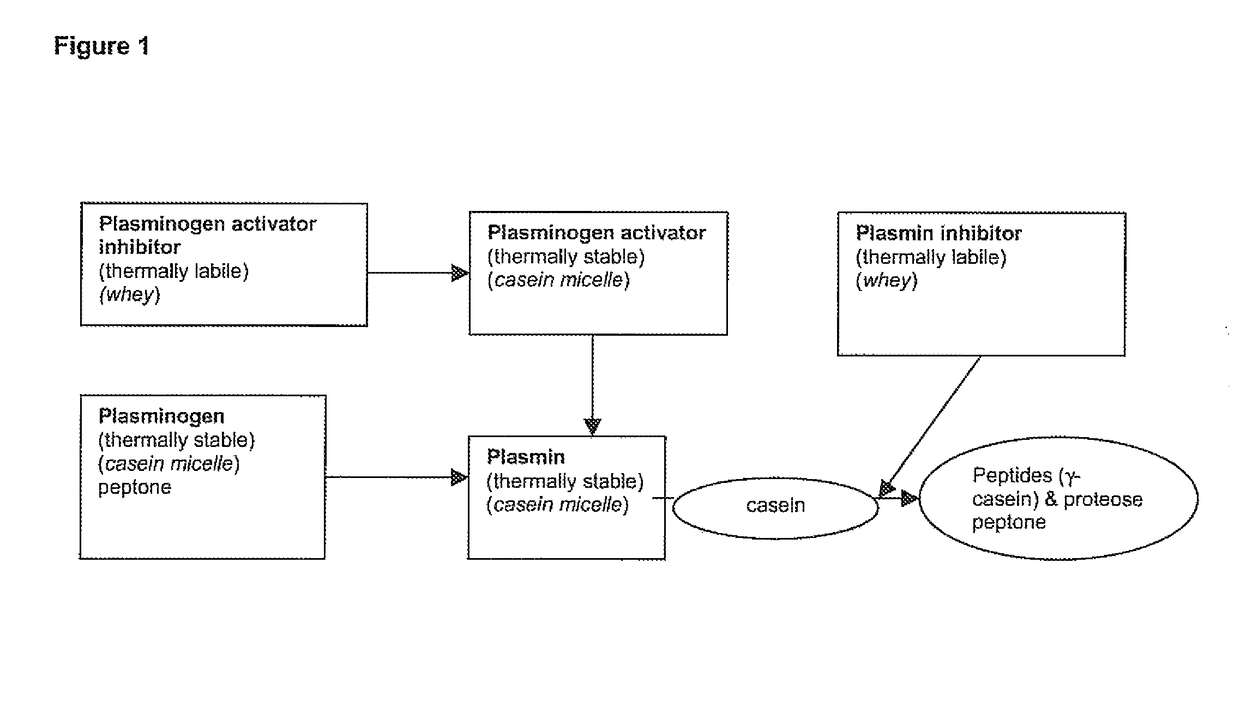Process for preserving low-lactose or lactose-free milk product
a technology of processing technology, which is applied in the field of processing for the production of a well-preserving low-lactose or lactose-free milk product, can solve the problems of substantially longer shelf life of such milk at room temperature, and achieve the effects of reducing the risk of gastrointestinal bleeding, improving the organoleptic properties, and improving taste properties and structur
- Summary
- Abstract
- Description
- Claims
- Application Information
AI Technical Summary
Benefits of technology
Problems solved by technology
Method used
Image
Examples
example 1
Carbohydrate-free UHT Milk
Description of Chromatographic Separation and Compositions of Fractions
[0051]A column (height 9 m, diameter 3 m) was packaged with a strong cation-exchange resin (Finex Oy) with an average particle size of 0.4 mm and a structure similar to Duolite C 2404 F (Duolite International, SA, Rohm and Haas), for instance. The resin volume of the packed column tempered to a temperature of 65° C. was 30 000 L. To achieve ion balance, skim milk (pH 6.7, 25 000 L) was pumped through the column and flushed with water. Into the column, 4 000 L of skim milk concentrate (dry content 29%) was fed and eluted with demineralised water at a flow rate of 4 000 L / h. Sugar and protein fractions were collected. The fractions remained in the column at 65° C. for 3 hours, after which they were cooled to below 10° C.
[0052]Table 1 shows the composition of the skim milk fractions after chromatographic separation. The separation was performed in such a manner that the protein fraction con...
example 2
Preparation of Well-preserving Low-lactose UHT Milk
Lactose-hydrolyzed UHT Milk of the Invention
[0068]UHT milk raw material was combined from protein fraction (62% by volume) and lactose fraction (38% by volume) described in table 3.
[0069]Before combining the fractions, 0.10% lactase (Godo YNL2) was added to the lactose fraction. The hydrolysis temperature was 37° C. and duration 4 hours. The protein fraction was heat treated (UHT 146° C., 4 s) and pumped into a sterile tank after cooling to 10° C. (milk base). The lactase treated lactose fraction was run through the same UHT process and added to the above milk base.
[0070]
TABLE 3Chromatographic separation of milk performed with milk proteincollected as thoroughly as possible to protein fractionSkim milkSkim milk concentrate(initialProteinLactose(20%)situation)fractionfraction(initial situationVolume (L)12500793053004000Ash (%)0.751.210.172.5Protein (%)3.535.350.110.9Lactose (%)4.650.7711.517.9Dry matter (%)9.287.6311.928.9
[0071]The c...
example 3
Low-lactose UHT Milk Product
[0072]Skim milk was ultrafiltered at 50° C. with concentration factor (CF) 4 to obtain an UF retentate, the composition of which is shown in table 4. The UF permeate obtained from ultrafiltration was nanofiltered at 10° C. with CF 4. The compositions of the obtained fractions are shown in table 5.
[0073]
TABLE 4Compositions of fractions at first filtrationSkim milk (initialUFNFNFsituation)retentate 1retentate 1permeate 1Volume (L)1000250187.5562.5Ash (%)0.751.581.110.25Protein (%)3.5313.720.40Lactose (%)4.654.617.10Dry matter (%)9.2819.819.60.27
[0074]NF permeate 1 and UF retentate 1 were combined and ultrafiltered with CF 3.6 at 50° C. UF permeate 2 was further nanofiltered at 10° C. with CF 12. The compositions of the fractions are shown in table 5.
[0075]
TABLE 5Composition of fractions at second filtrationFeedUF retentate 2NF retentate 2NF permeate 2Volume (L)812.5225.748.9537.9Ash (%)0.661.300.860.17Protein (%)4.2214.6500Lactose (%)1.481.6416.80Dry matter...
PUM
 Login to View More
Login to View More Abstract
Description
Claims
Application Information
 Login to View More
Login to View More - R&D
- Intellectual Property
- Life Sciences
- Materials
- Tech Scout
- Unparalleled Data Quality
- Higher Quality Content
- 60% Fewer Hallucinations
Browse by: Latest US Patents, China's latest patents, Technical Efficacy Thesaurus, Application Domain, Technology Topic, Popular Technical Reports.
© 2025 PatSnap. All rights reserved.Legal|Privacy policy|Modern Slavery Act Transparency Statement|Sitemap|About US| Contact US: help@patsnap.com



